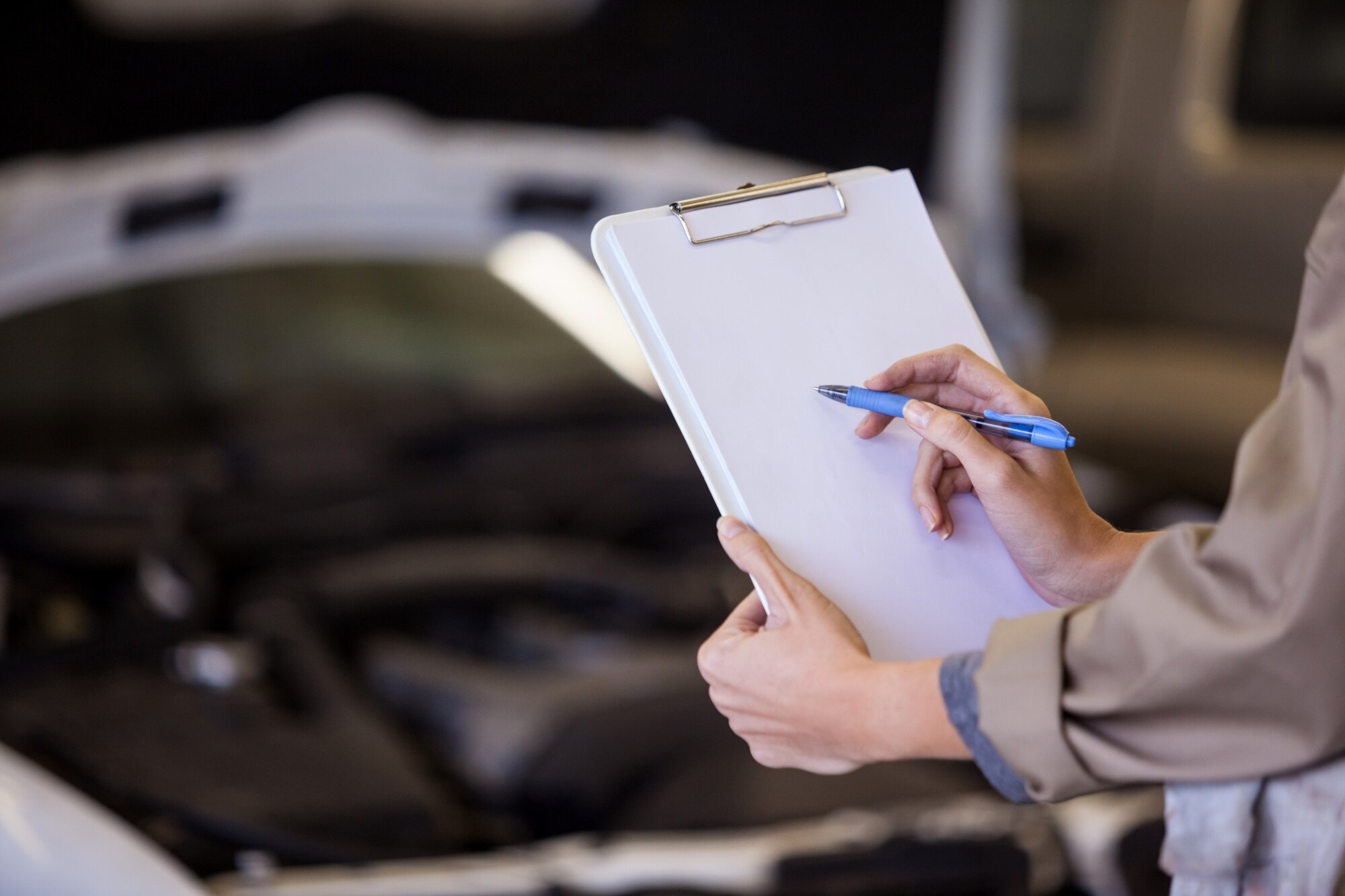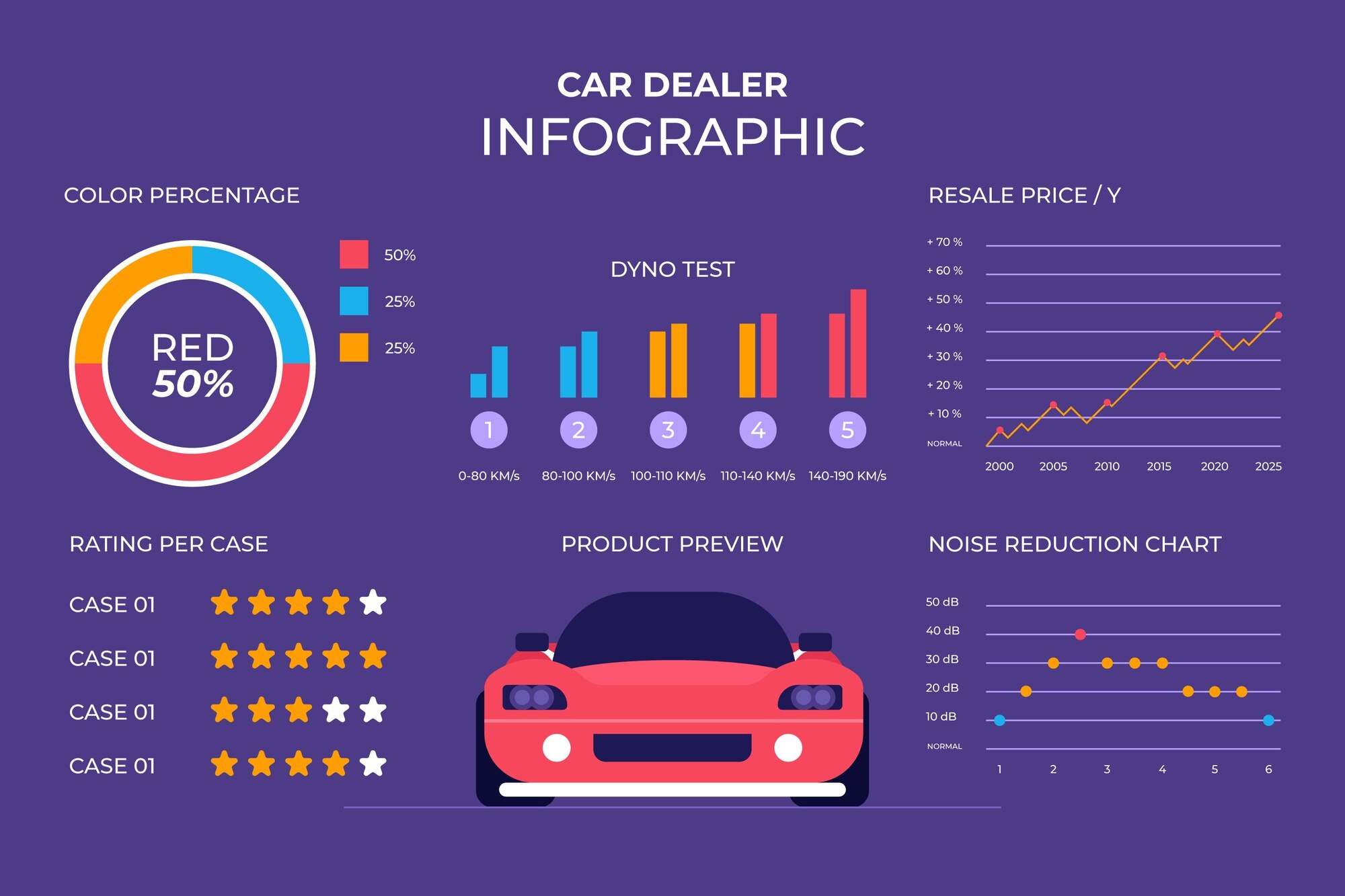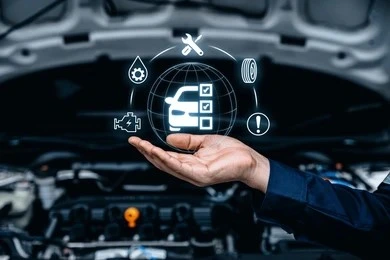Learn why a Vehicle History Report is essential for car buyers. Understand its significance, how it helps make informed decisions, and the key insights you need to ensure a safe and smart purchase.
Introduction
Keeping your car in peak condition isn’t just a good idea—it’s essential. A comprehensive vehicle inspection helps keep you safe, avoids costly repairs, and ensures legal compliance. Whether you’re a seasoned driver or a new car owner, understanding what goes into a thorough inspection can save you time and money.
Understanding the Importance of Vehicle Inspections
Getting your car inspected regularly isn’t just about ticking a box. It’s about ensuring safety, avoiding major expenses, and keeping things running smoothly.
1. Safety Benefits
Picture this: you’re driving down the highway, and your brakes suddenly fail. This nightmare scenario can often be avoided with regular inspections. Mechanics check for worn-out brake pads, weak tires, and other hazards that could cause accidents. Catching these problems early could save your life.
2. Legal Requirements
Every region has laws on vehicle inspections, though they vary widely. In some places, you’ll need an inspection to renew your registration. In others, it’s mandatory annually. Skip it, and you could face fines—or worse, your insurance might not cover you after an accident. Always check your local rules to avoid trouble.
3. Cost-Effectiveness
Small problems turn into big ones if ignored. A $30 oil change could prevent a $3,000 engine replacement down the line. Regular inspections help you spot issues while they’re still affordable to fix. Plus, a well-maintained car burns fuel more efficiently, saving money at the pump.
Key Components of a Vehicle Inspection Checklist
Every inspection checklist covers some basic areas. Here’s what you’ll typically find:
1. Exterior Condition
The outside of your car might seem like just a shell, but it’s more than cosmetic. Inspecting the body ensures there’s no major damage that could compromise safety. Look for:
- Rust or corrosion that could weaken the frame.
- Cracks or chips in the windshield that may obstruct your view. Learn more about windshield repairs.
- Loose or broken mirrors, headlights, and taillights.
2. Tires and Wheels
Tires are your car’s only contact with the road, so they need to be in top shape. Check:
- Tread depth: Too shallow, and you risk losing traction, especially in rain.
- Pressure: Under-inflated tires affect gas mileage and handling.
- Damage: Look for bulges, cracks, or punctures.
3. Braking System
Your brakes are your most important safety feature. During an inspection, mechanics look at:
- Brake pads: Worn-out pads reduce stopping power.
- Rotors: Warped or worn rotors can cause uneven braking.
- Fluid levels: Low brake fluid can mean leaks or air in the system.
4. Engine and Transmission
Your engine and transmission are the heart of your car. Neglecting them can lead to serious issues. Inspections include:
- Engine oil: Dirty or low oil can damage internal parts.
- Coolant: Keeps your engine from overheating.
- Transmission fluid: Essential for smooth shifting and preventing wear.
5. Interior Features and Controls
The inside of your car also gets checked to ensure everything works as it should. Inspect:
- Seat belts: Make sure they buckle securely and retract properly.
- Dashboard indicators: Lights like the check engine warning shouldn’t be ignored.
- Lights: Test headlights, brake lights, and interior lighting.
How to Conduct a Comprehensive Vehicle Inspection
You don’t need to be a mechanic to do a basic inspection at home. Here’s how you can get started:
Preparation Steps
Before you dive in, gather the right tools. You’ll need a tire pressure gauge, a flashlight, and your vehicle manual. Find a safe, flat place to work, such as your driveway, and ensure the car is cool before starting.
Inspection Process
Follow these steps to perform a thorough vehicle inspection:
1. Exterior
Walk around your car and visually inspect for any dents, cracks, or anything unusual. Be sure to check the windshield and mirrors for damage.
2. Tires
Measure the tread depth with a gauge or a penny. Also, test the air pressure and inspect the tires for visible damage, such as bulges or punctures.
3. Brakes
Test your brakes by slowly rolling the car in your driveway. Listen for any squeaks or grinding sounds, which could indicate worn-out pads or other issues.
4. Fluids
Pop the hood and check the levels of oil, coolant, and brake fluid. They should fall between the "min" and "max" markers on their respective dipsticks.
5. Interior
Test all switches and controls inside the vehicle. Ensure that seat belts lock securely and check that no warning lights related to airbags appear on the dashboard.
Professional vs. DIY Inspections
Should you handle inspections yourself or leave it to a professional? It depends on your comfort and the type of inspection needed.
DIY Inspections: Quick and Simple Checks
For basic tasks like checking tire pressure, fluid levels, and lights, DIY inspections are a good option. Regularly performing these simple checks can help catch minor issues early.
Professional Inspections: In-Depth Expertise
For more complex issues, such as engine diagnostics or brake system checks, a professional inspection is necessary. They have the tools and expertise to spot issues that might not be visible or easy to diagnose.
The Best Approach: Combining DIY and Professional Inspections
Combine both! Do quick DIY checks yourself, but for a comprehensive evaluation, schedule a professional inspection to keep your vehicle in top condition.
When to Seek Professional Help
If you’re hearing strange noises, noticing performance issues, or smelling something odd, take your car to the shop. Professionals have specialized tools and training to spot problems you might miss. Many shops offer detailed inspection services, including diagnostics for engine and transmission issues.
DIY Inspection Tips
Want to inspect your car yourself? Here are some simple checks you can do to keep your vehicle in top shape:
Check Fluid Levels
- Engine oil: Ensure it’s clean and at the right level. Learn more.
- Brake fluid: Low levels could indicate a braking issue. Find out how to check brake fluid.
- Coolant: Prevent overheating by maintaining the correct level.
- Transmission fluid: Essential for smooth operation. Check the details on transmission fluid.
Inspect Tire Pressure
Use a tire pressure gauge to ensure tires are at the recommended PSI for better handling and fuel efficiency.
Test Lights
Ensure headlights, taillights, brake lights, and turn signals are all working properly.
Wipers and Windshield
Check wiper blades for wear and ensure your windshield is clear of cracks to maintain optimal visibility.
Listen for Sounds
Any unusual noises like squealing belts or engine knocking should be checked promptly to avoid potential issues.
Check Battery
Make sure the battery is clean and corrosion-free to ensure it functions properly.
Look for Leaks
Inspect under the car for any fluid leaks that could lead to mechanical issues.
Conclusion
A comprehensive vehicle inspection is more than just a routine task—it’s a safeguard for your safety and your wallet. Regular checks help prevent accidents, keep your car running longer, and ensure you’re road-legal. Whether you do it yourself or visit a professional, don’t skip this crucial step in car ownership. A little effort today could save you from big headaches tomorrow. Stay safe out there!
FAQs (Frequently Asked Questions)
What is a pre-purchase car inspection?
A pre-purchase car inspection is a comprehensive evaluation of a used vehicle conducted before the purchase. It assesses key areas such as mechanical and electrical systems to identify any hidden issues that may not be apparent during a casual inspection.
How often should I get my vehicle inspected?
The frequency of inspections depends on your car’s age, condition, and how often it is used. However, it’s recommended to have a full inspection annually, and always after any significant repairs or if you notice unusual sounds or performance issues.
Can I do a vehicle inspection myself?
Yes, you can perform basic inspections yourself, such as checking fluid levels, tire pressure, and lights. However, for a thorough and professional evaluation, especially of critical components like the engine or transmission, a certified mechanic should conduct the inspection.
Why should I get a professional inspection?
A professional inspection offers in-depth analysis using specialized tools to detect issues that may not be visible to the untrained eye. A mechanic can also provide a detailed report to help you make informed decisions before purchasing or selling a vehicle.
What does a typical vehicle inspection include?
A typical vehicle inspection includes a check of the exterior condition, tires, braking system, engine, transmission, fluids, lights, and interior features like seat belts and airbags. The goal is to assess both safety and performance.
How much does a professional car inspection cost?
The cost of a professional car inspection can vary based on location and the depth of the inspection, but it typically ranges from $100 to $200. Some mechanics may charge additional fees for diagnostic tests or road tests.
What happens if a car fails its inspection?
If a car fails its inspection, you may be advised to perform repairs before it can pass the inspection. Some issues might be minor, while others could require significant repairs to ensure safety and roadworthiness.




Share this post: